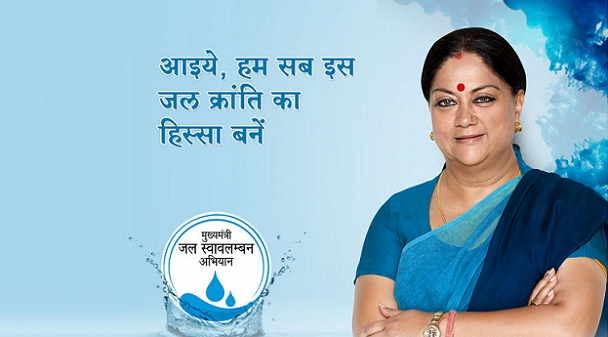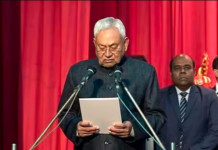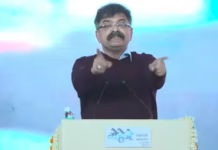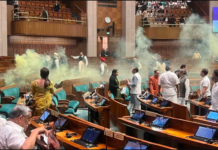Government makes Elaborate preparations to Implement the Globally Renowned Multi-Crore Water Conservation Project.
Water scarcity, saline reservoirs, low annual rainfall and sandy soils are major factors that stalled Rajasthan’s progress in tourism, trade and agricultural sectors over the years. Nevertheless, when Vasundhara Raje led BJP government came to power in 2013 hunger, nutritional deficiency, scarce agricultural output and poor supply of drinking water were plaguing the state. Mukhyamantri Jal Swavlamban Abhiyan (MJSA) was a brilliant collective step to break free from the vicious claws of demons hampering people’s growth.
Rajasthan’s Jal Swavlamban Abhiyan Highlights
- Remote, barren lands in state were identified via geo-tagging and public inputs.
- Based on this data, Rajasthan government identified around 1,42,247 water conservation projects in state.
- By implementing MJSA, government plans to conserve rain water, runoff, soil moisture and ground water. The amount is supplied to remote, drought-stricken regions of Rajasthan.
- Large masses contributed labour force, animal force, machinery, tractors and funds for construction of Johad, Jal Kunds, Tankas and other restorative structures in their region. The idea was to promote a sense of ownership and responsibility among men.
- State water board prepared a DPR (Detailed Project Report) for estimating the total cost of project. It was pegged at 11950000000. Through MJSA Rajasthan, the CM made a public appeal to raise the gigantic amount for the state.
- A public contribution committed headed by state industry minister Gajendra Singh Khinsar was established for fund collection, allocation and distribution.
- 5032 volunteers contributed around 53 crores for phase I of Jal Swavlamban Abhiyan. 3,259 villages were benefitted by the scheme.
- Under MJSA Phase I, the authorities aimed for 96,709 projects and 94,386 tasks were successfully completed by September 2016.
- Besides water conservation, large scale tree plantation was conducted to improve soil health and to restore the greenery of land surrounding the main water reservoir. It was a clever attempt at eco-tourism, which attracted migratory fauna to newfound green lands.
MJSA Restores Greenery & Moisture in Rajasthan’s Barren Lands
Lack of funds was a major issue for the government. Panchayati Raj Department had 21,314 projects and state watershed department had 64,999 projects pending in Rajasthan. 11 State departments, mainly Forest, Agriculture, PHED, Horticulture, Water Resource, Rural Development, MGNREGS, Rural Development, Ground Water and Canal Area Development were called upon to execute MJSA phase 2.
The aforementioned departments had finalized their tasks for the second phase. Total cost for the project was calculated as Rs. 2100 crores. With public contribution of Rs. 39,11,73,176 (and the rest funded by state government), the authorities are set to implement the final stage of MJSA Rajasthan by December, at a bigger scale. The scheme shall cover 4,200 villages at large.
With powerful schemes like MJSA and GRAM (Global Rajasthan Agritech Meet) scheduled this week, government plans to boost agriculture, water supply and micro-trade industries as a means to enhance fund capital before 2018. In future, the world shall witness Rajasthan’s tourism, agriculture and water potential.












